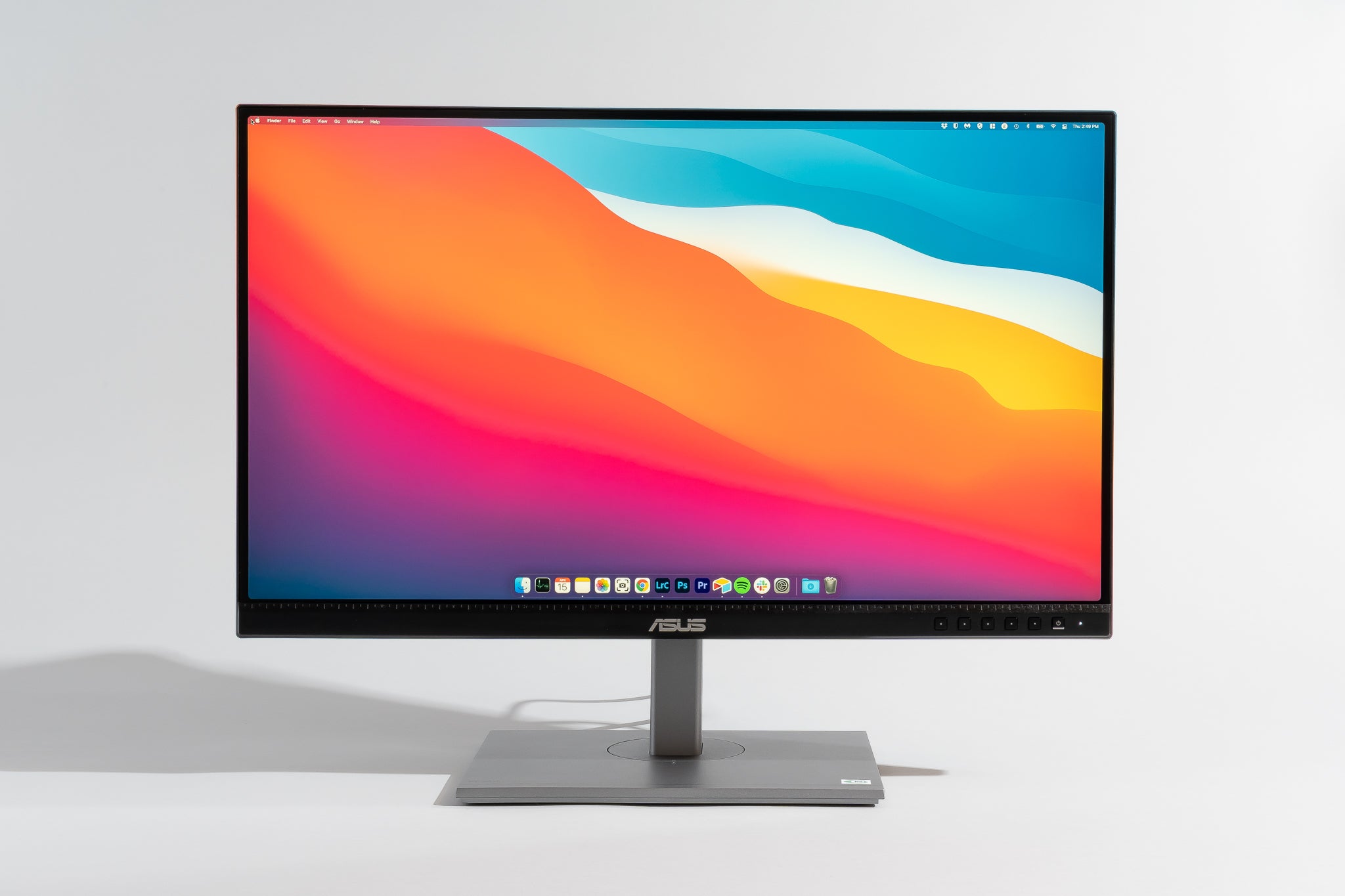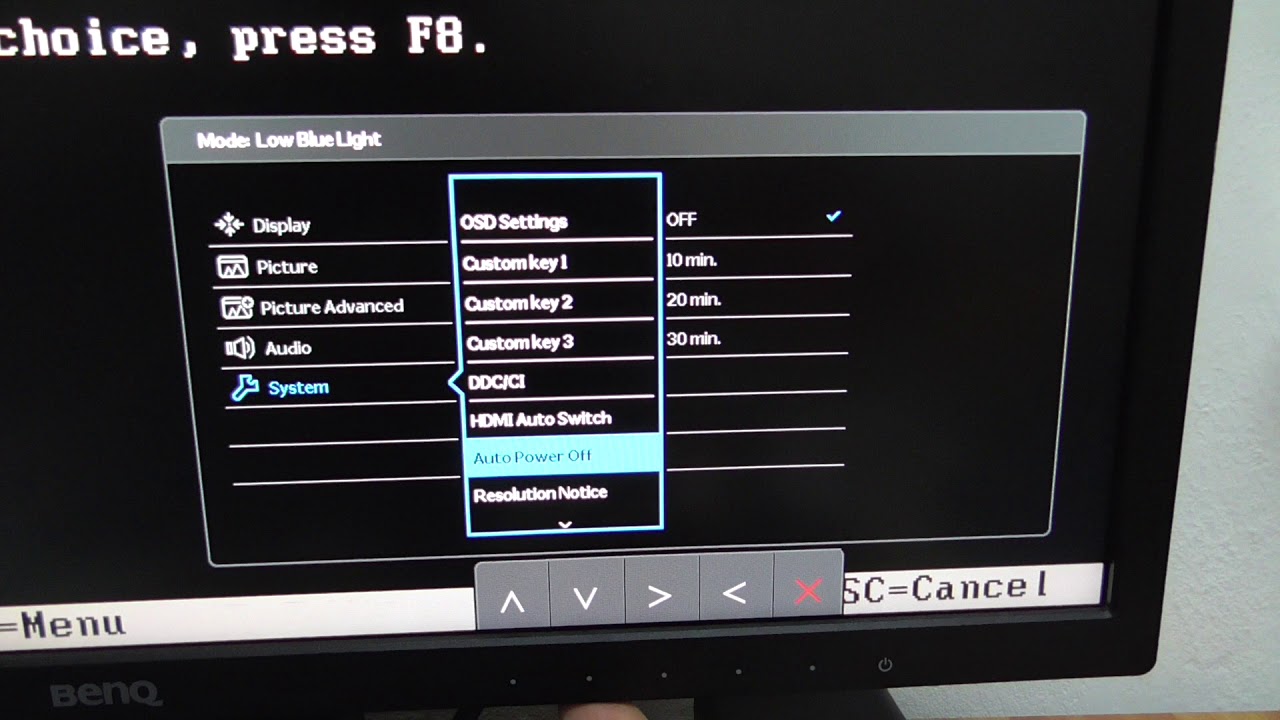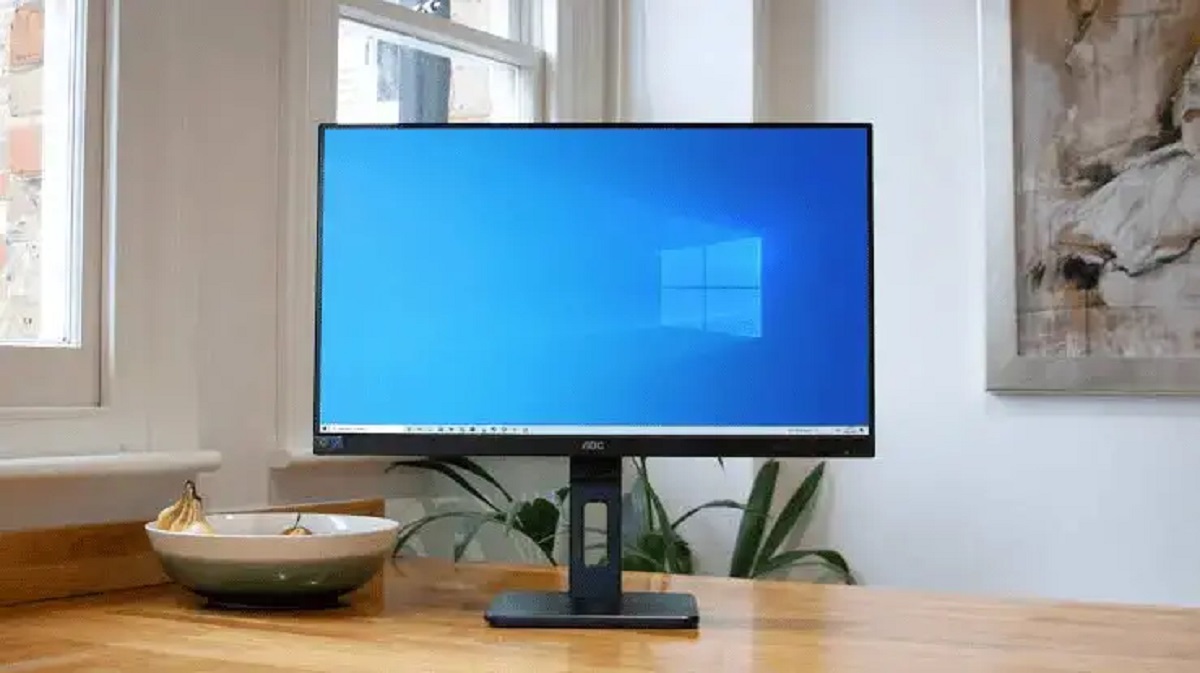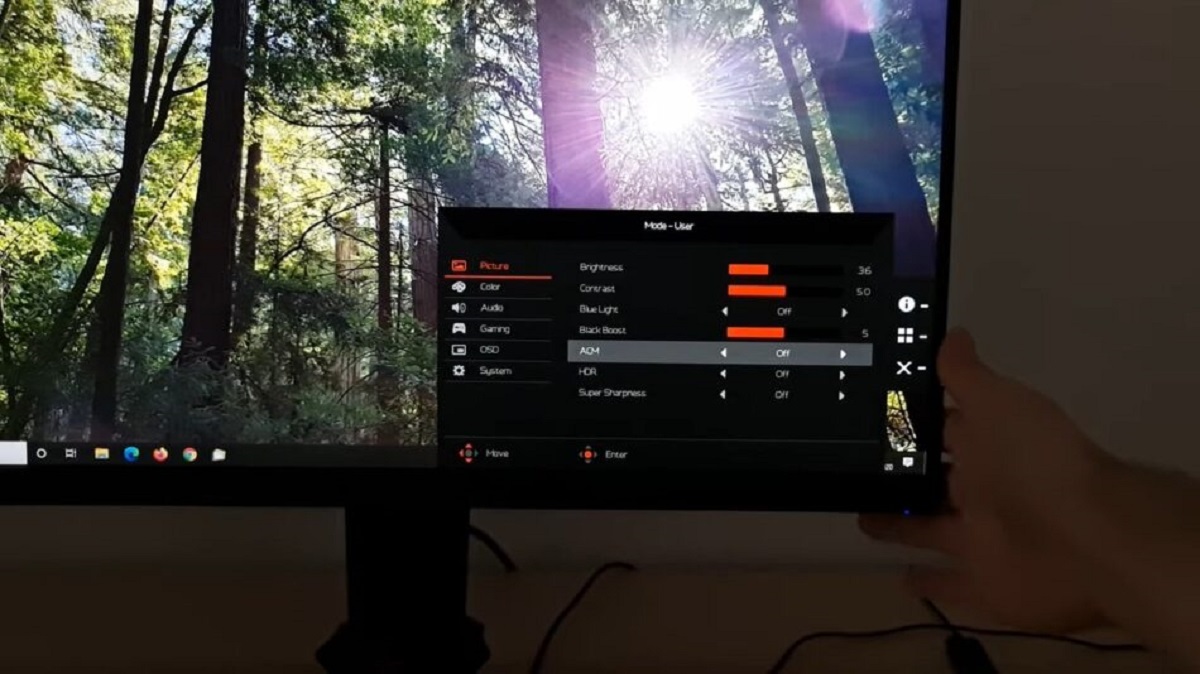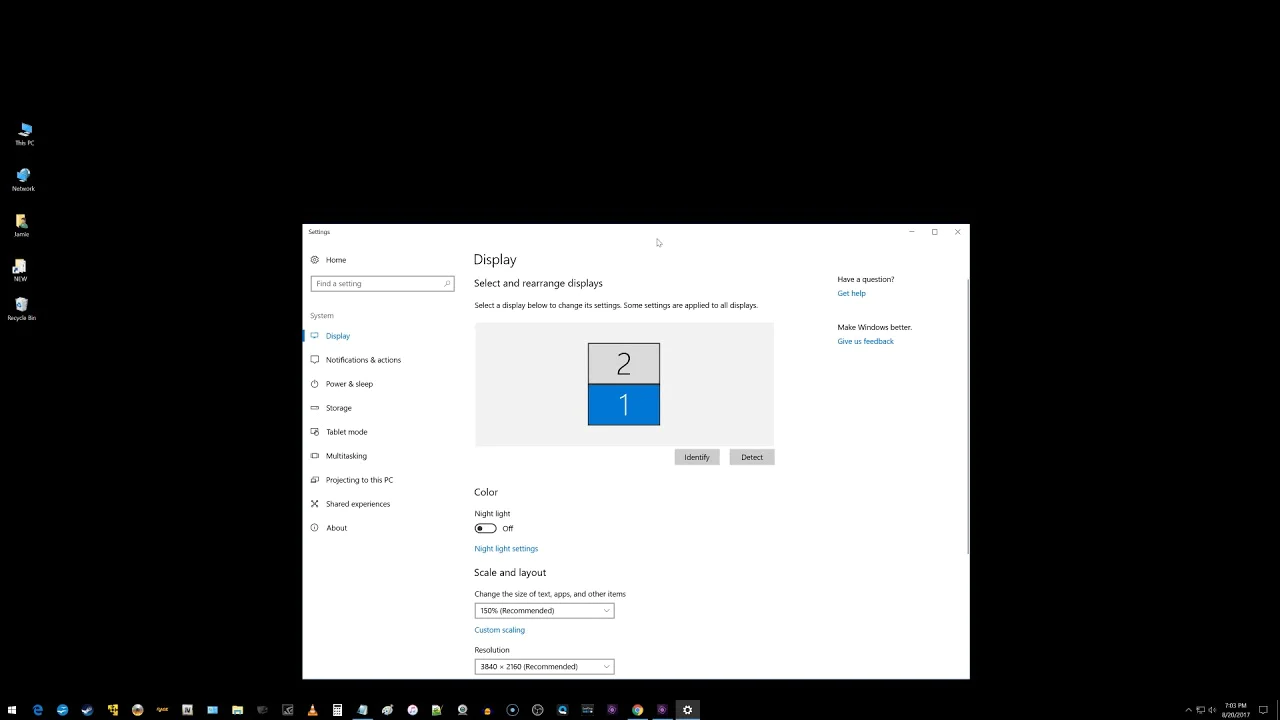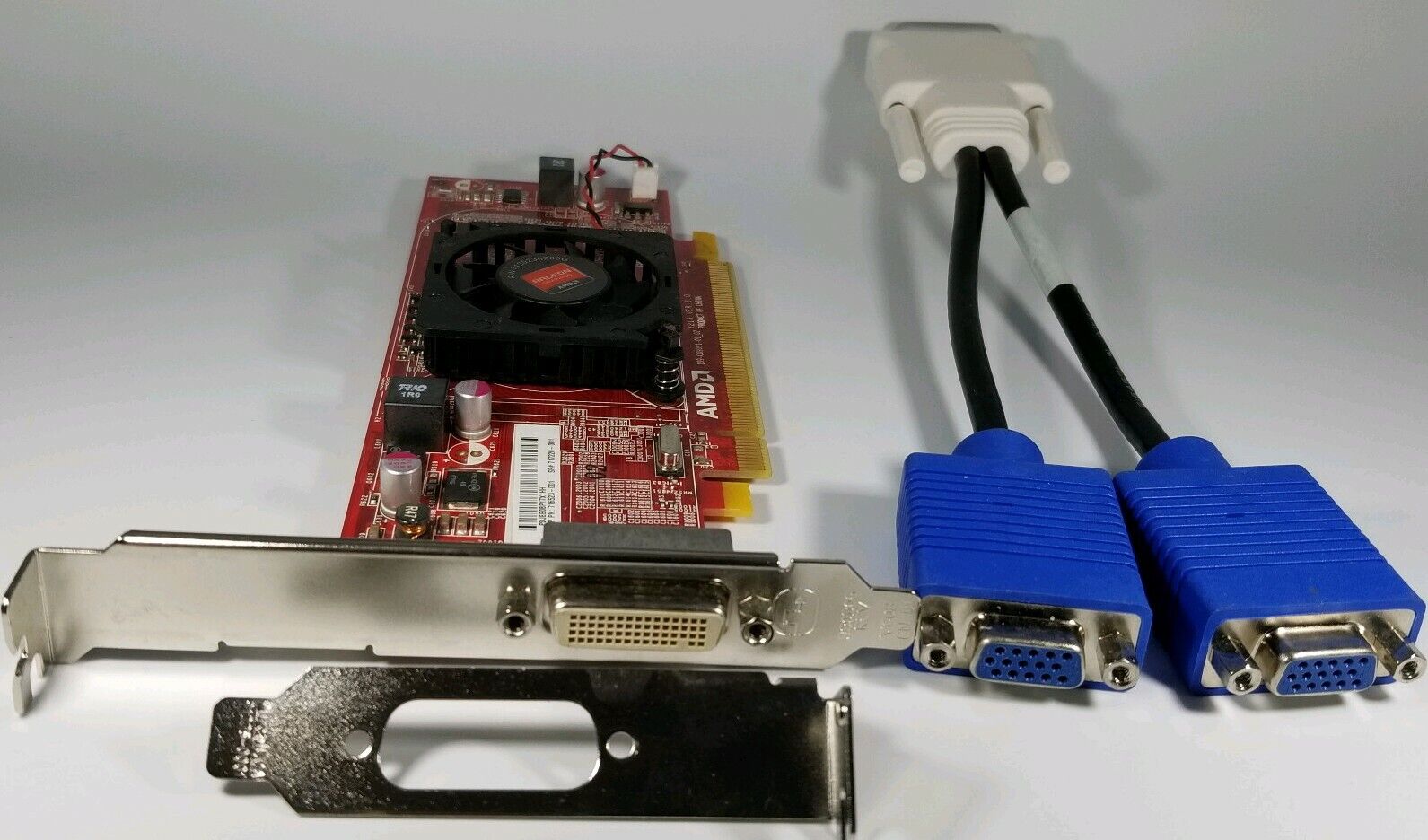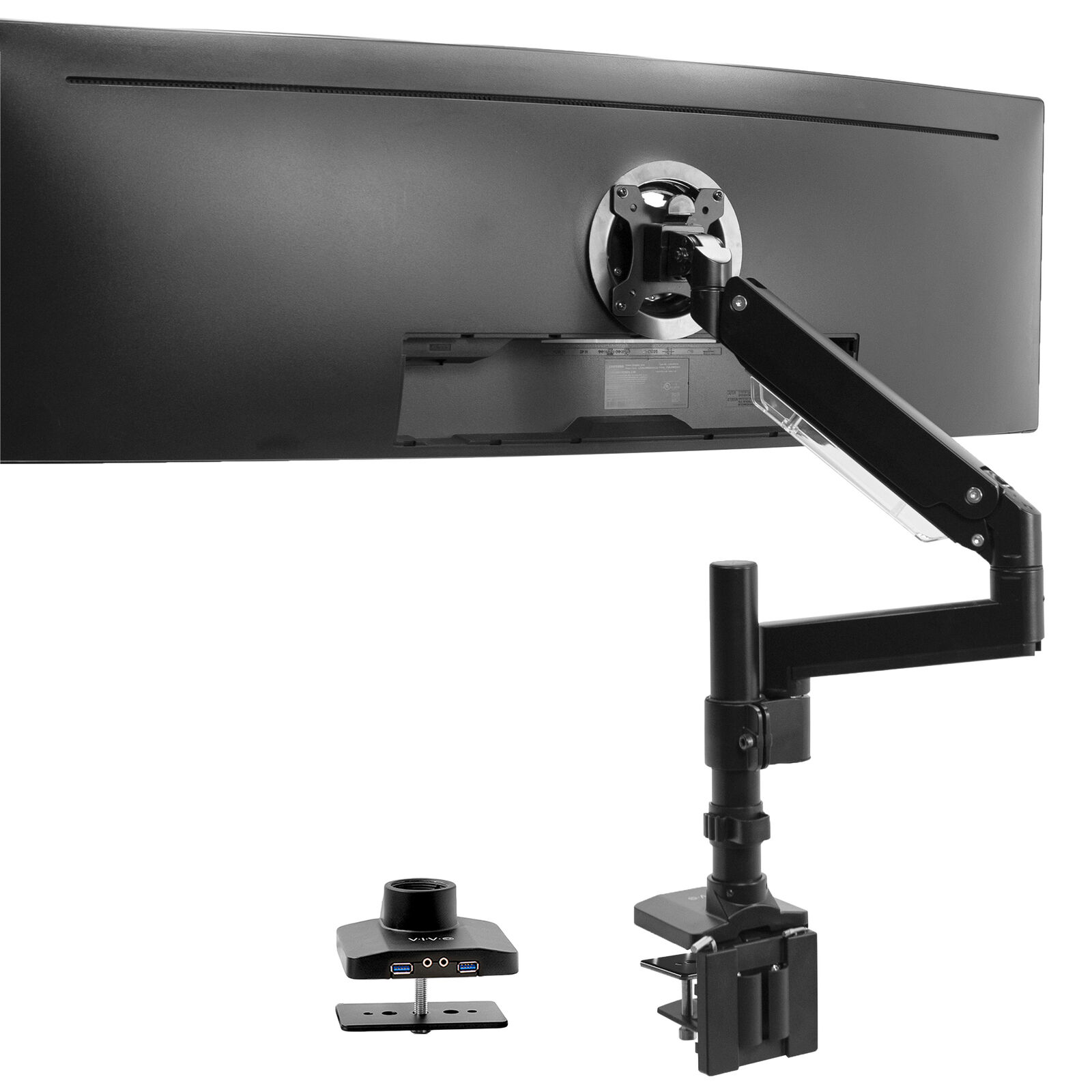Introduction
A monitor is an essential hardware component of a computer system that displays visual information in a graphical format. It serves as the primary output device, allowing users to interact with the digital world. From browsing the internet and working with documents to watching videos and playing games, a monitor is the window through which we experience the digital realm.
With advancements in technology, monitors have evolved significantly over the years, offering improved image quality, enhanced features, and sleeker designs. Today, there is a wide range of monitors available, catering to different needs and preferences. Whether you are a professional in need of a high-resolution display for photo editing or a gamer looking for a monitor with fast response times, there is a perfect monitor out there for you.
In this article, we will explore the different types of monitors and delve into the key factors to consider when purchasing one. We will discuss the various display technologies, resolutions, refresh rates, and connectivity options, among other essential features. By the end, you will have a better understanding of what to look for when choosing a monitor that best suits your needs.
It’s important to note that a monitor’s performance and quality can significantly impact your overall computing experience. A subpar monitor may result in eye strain, lower productivity, or a less immersive gaming experience. Therefore, it’s wise to invest in a high-quality monitor that meets your requirements and enhances your visual experience.
So, let’s embark on this journey to discover the world of monitors and unlock the potential to work, play, and immerse ourselves in the digital realm like never before.
The Role of a Monitor
A monitor plays a crucial role in any computer setup. It acts as the interface between the user and the digital content, providing a visual representation of text, images, videos, and graphics. Without a monitor, the output of a computer system would remain unseen, rendering the entire system useless.
Monitors serve as both a means of communication and a source of entertainment. Whether you’re browsing the internet, writing a document, or watching a movie, the monitor displays the content in a clear and visually appealing manner. The quality of the monitor directly affects the user’s experience, and a well-performing monitor can significantly enhance productivity and enjoyment.
In addition to displaying visual content, monitors also allow users to interact with their computers through graphical user interfaces (GUIs). With the help of a mouse and keyboard, users can navigate through menus, click on icons, open applications, and perform various tasks efficiently. The monitor’s display quality and size are essential factors in ensuring a smooth and seamless user experience.
For professionals such as graphic designers, photographers, and video editors, a high-quality and accurate monitor is indispensable. These individuals rely on their monitors to accurately represent colors, contrast, and details in their work. A monitor with superior color accuracy will ensure that the final product looks as intended, while a monitor with a high-resolution display allows for precise editing and greater attention to detail.
For gamers, the monitor is a gateway to immersive and realistic gaming experiences. A monitor with a high refresh rate and fast response time can eliminate motion blur and input lag, resulting in smooth and responsive gameplay. Additionally, features such as adaptive sync can synchronize the display refresh rate with the graphics card’s output, reducing screen tearing and enhancing visual fluidity.
Overall, the role of a monitor extends beyond simply displaying content. It is a vital component that affects usability, productivity, and enjoyment across a wide range of activities. Choosing the right monitor tailored to your specific needs is essential for an optimal computing experience.
Types of Monitors
Monitors come in various types, each designed to cater to specific needs and preferences. Understanding the different types of monitors can help you make an informed decision when choosing the right one for your computing setup. Let’s explore some of the most common types:
CRT Monitors
Cathode Ray Tube (CRT) monitors were once the standard type of display for computers. These bulky monitors used electron beams to create images on a phosphorescent screen. While CRT monitors have become less common in recent years, they still have certain advantages, such as high contrast ratios and low input lag, making them suitable for retro gaming enthusiasts.
LCD Monitors
Liquid Crystal Display (LCD) monitors have become the most prevalent type of monitor in today’s market. These displays use liquid crystal cells to create images. LCD monitors are known for their slim design, low power consumption, and wide range of screen sizes. They are suitable for a variety of tasks, from office work to multimedia consumption.
LED Monitors
Light Emitting Diode (LED) monitors are a type of LCD monitor that uses LED backlighting instead of traditional cold cathode fluorescent lamps (CCFLs). LED monitors offer improved contrast, brightness, and energy efficiency compared to their LCD counterparts. They are generally more expensive but provide a superior visual experience.
OLED Monitors
Organic Light Emitting Diode (OLED) monitors are known for their exceptional image quality and vibrant colors. Unlike LCD monitors, OLED displays don’t require backlighting, as each pixel emits its light. This technology allows for deep blacks, high contrast ratios, and wide viewing angles. OLED monitors are highly coveted by professionals in fields such as graphic design and photography.
Curved Monitors
Curved monitors have gained popularity in recent years due to their immersive viewing experience. These displays feature a slight curve that wraps around the viewer’s field of vision, providing a more natural viewing experience with enhanced depth and immersion. Curved monitors are particularly favored by gamers and multimedia enthusiasts.
Ultrawide Monitors
Ultrawide monitors, as the name suggests, have an aspect ratio wider than the standard 16:9. These monitors offer more horizontal screen space, allowing users to multitask efficiently or enjoy a more immersive gaming and cinematic experience. Ultrawide monitors are especially popular among content creators and gamers.
These are just a few examples of the different types of monitors available in the market. Each type has its strengths and features. Considering your specific requirements and preferences will help you choose the right monitor type that best suits your needs.
CRT Monitors
Cathode Ray Tube (CRT) monitors were once the standard display technology for computer systems. These monitors used a cathode ray tube, which is essentially a large vacuum tube, to create images on a phosphorescent screen. While CRT monitors have been largely replaced by more advanced display technologies, they still have some unique characteristics and applications.
One of the notable features of CRT monitors is their high contrast ratio. The ability to produce deep blacks and bright whites makes CRT monitors suitable for tasks that require accurate color representation, such as graphic design and photo editing. Additionally, the lack of backlighting in CRT monitors results in zero backlight bleed, providing an exceptional level of image uniformity across the screen.
Another advantage of CRT monitors is their low input lag. Input lag refers to the delay between inputting a command and seeing it displayed on the screen. Due to the direct nature of the electron beam technology used in CRTs, these monitors have minimal input lag, making them favored by competitive gamers who require fast and responsive displays.
However, CRT monitors do have some drawbacks. One of the most significant is their bulky and heavy design. CRTs require a substantial amount of physical space due to the size of the cathode ray tube. Additionally, the weight of CRT monitors can make them difficult to move or adjust, unlike modern lightweight displays.
Moreover, CRT monitors tend to consume more power compared to newer technologies. The large cathode ray tube requires a considerable amount of energy to generate the electron beam, resulting in higher electricity bills. This power consumption also leads to the production of more heat, which can make the monitor uncomfortable to use for extended periods.
In terms of screen resolution, CRT monitors generally have lower resolutions compared to modern displays. While this may not be a significant concern for everyday tasks, it can limit the level of detail and clarity for tasks that require high resolution, such as video editing or viewing high-definition content.
Overall, while CRT monitors have been largely outdated, they still have their unique advantages, such as high contrast ratios and low input lag. However, their bulky design, high power consumption, and limited screen resolutions make them less practical for most modern computer setups. As a result, CRT monitors have become obsolete in favor of more advanced and efficient display technologies.
LCD Monitors
Liquid Crystal Display (LCD) monitors have become the standard display technology for modern computer systems. These monitors use liquid crystal cells sandwiched between two sheets of glass to create images. LCD monitors offer several advantages over their predecessor, CRT monitors, making them the preferred choice for most users.
One of the key benefits of LCD monitors is their slim and compact design. Unlike the bulky cathode ray tubes used in CRT monitors, LCD monitors are thin and lightweight, allowing for greater flexibility in terms of placement and portability. Their sleek profile also contributes to a more aesthetically pleasing and space-saving setup.
Another advantage of LCD monitors is their lower power consumption. Compared to CRT monitors, LCD screens require significantly less electricity to operate. This not only leads to lower electricity bills but also reduces heat generation, resulting in a cooler and more comfortable workspace.
LCD monitors also offer a wide range of screen sizes and resolutions, catering to different needs and preferences. Whether you require a compact monitor for everyday tasks or a large display for immersive gaming or content creation, LCD monitors provide various options to suit your requirements.
Furthermore, LCD monitors provide excellent image quality with vibrant colors and sharp details. Most LCD displays use backlit panels, such as Cold Cathode Fluorescent Lamps (CCFLs), to illuminate the screen and produce uniform brightness. This allows for consistent color representation across the entire display, making LCD monitors suitable for tasks that require accurate color reproduction, such as graphic design and photo editing.
However, LCD monitors do have some limitations. One drawback is their limited viewing angles. Viewing an LCD monitor from extreme angles can result in color shifts or distorted images. However, advancements in display technology, such as In-Plane Switching (IPS) and Plane-to-Line Switching (PLS), have significantly improved viewing angles, allowing for better color consistency and wider viewing positions.
Response time is another important aspect to consider when it comes to LCD monitors. Slower response times can cause motion blur, particularly noticeable when viewing fast-moving content, such as action-packed movies or gaming. However, modern LCD monitors now offer faster response times, particularly in gaming-oriented models, minimizing motion blur and enhancing the overall visual experience.
In summary, LCD monitors offer several advantages over CRT monitors, including a slim design, lower power consumption, a wide range of sizes and resolutions, and vibrant image quality. Although they may have limitations in terms of viewing angles and response times, LCD monitors have become the standard choice for most computer users due to their overall performance and versatility.
LED Monitors
Light Emitting Diode (LED) monitors are a type of Liquid Crystal Display (LCD) monitor that utilizes LED backlighting technology. LED monitors have gained popularity in recent years due to their improved performance and visual quality compared to traditional LCD monitors.
One of the main advantages of LED monitors is their superior contrast ratio. LED backlighting allows for deeper blacks and brighter whites, resulting in enhanced image detail and better color accuracy. This feature makes LED monitors suitable for various applications, including graphic design, video editing, and multimedia consumption.
In addition to improved contrast, LED monitors offer higher brightness levels compared to traditional LCD monitors. This increased brightness ensures that images displayed on the screen are vivid and easily visible, even in brightly lit environments. LED monitors are particularly favored in settings such as offices, classrooms, and public displays.
Another significant advantage of LED monitors is their energy efficiency. LED backlighting consumes less power compared to traditional Cold Cathode Fluorescent Lamps (CCFLs) used in LCD monitors. This energy efficiency not only helps reduce electricity bills but also contributes to a more environmentally friendly setup.
LED monitors also have a longer lifespan compared to traditional LCD monitors. The LED backlighting technology used in these displays tends to be more durable and resistant to degradation over time. This means that LED monitors can provide consistent image quality for an extended period, making them a reliable investment.
One of the key factors contributing to the popularity of LED monitors is their slim and sleek design. LED backlighting allows for a thinner display panel, resulting in a more compact and lightweight monitor. This slim profile not only adds aesthetic appeal but also provides greater flexibility in terms of monitor placement and portability.
LED monitors are available in a variety of sizes and resolutions, catering to different needs and preferences. Whether you require a compact monitor for everyday tasks or a large display for immersive gaming or professional content creation, there is an LED monitor available to suit your requirements.
While LED monitors offer numerous advantages, it’s important to note that they can be slightly more expensive compared to traditional LCD monitors. However, the enhanced performance, longevity, energy efficiency, and sleek design make LED monitors a worthwhile investment for those seeking high-quality displays.
In summary, LED monitors provide superior contrast, higher brightness levels, energy efficiency, longevity, and a sleek design. These monitors have become the preferred choice for users who prioritize visual quality and want a reliable and environmentally friendly display option.
OLED Monitors
Organic Light Emitting Diode (OLED) monitors are considered the pinnacle of display technology, offering exceptional image quality and vibrant colors. Unlike traditional LCD monitors that require backlighting, OLED monitors utilize organic compounds that emit light when an electric current is applied, resulting in rich and lifelike visuals.
One of the key advantages of OLED monitors is their ability to display true black levels. When a pixel is turned off, it emits no light, creating perfect black pixels. This results in an infinite contrast ratio and outstanding image depth, making OLED monitors ideal for content that demands rich shadow detail and deep blacks, such as movies and games.
The color reproduction of OLED monitors is also exceptional. Each pixel emits light independently, allowing for accurate and vibrant colors with wide color gamut coverage. This feature is particularly important for professionals in industries such as graphic design, photography, and video editing, who rely on precise color representation.
Another advantage of OLED technology is its fast response time. With no backlight to control, OLED pixels can switch on and off rapidly. This results in smooth motion handling and eliminates motion blur, making OLED monitors an excellent choice for fast-paced gaming and action-packed videos.
OLED monitors also provide wide viewing angles with virtually no color shifting or loss of image quality at extreme angles. This means that the content remains visually consistent, even when viewed from different positions. This feature is especially beneficial in scenarios where multiple people need to view the screen simultaneously or during presentations.
Furthermore, OLED monitors have a slim and lightweight design. The absence of a backlight layer makes the displays thinner and lighter compared to LCD monitors, making them aesthetically pleasing and easier to handle.
Despite the numerous advantages, OLED monitors do come with a few limitations. One primary concern is the potential risk of burn-in. Displaying static elements, such as logos or taskbars, for extended periods may cause these elements to permanently “burn” into the screen. However, modern OLED monitors employ various technologies, such as pixel-shifting and screen-saver features, to mitigate this issue.
In terms of pricing, OLED monitors are generally more expensive compared to other types of displays. The manufacturing process is complex, and OLED technology is still relatively new, resulting in higher production costs. However, as the technology advances and becomes more widely adopted, prices are expected to become more accessible over time.
In summary, OLED monitors offer unparalleled image quality, infinite contrast ratios, wide color gamut coverage, fast response times, wide viewing angles, and sleek designs. While they come with some limitations, OLED monitors are highly sought-after by professionals and enthusiasts looking for the best visual experience.
Curved Monitors
Curved monitors have gained popularity in recent years, offering a unique viewing experience that enhances immersion and visual engagement. These displays feature a slight curvature that wraps around the viewer’s field of vision, providing a more natural and immersive viewing experience.
One of the main advantages of curved monitors is the enhanced sense of depth they provide. The curved shape creates a more panoramic view, making the display feel larger and wrapping the image around the viewer. This increased sense of depth and immersion is particularly beneficial for tasks that require a more immersive visual experience, such as gaming, video editing, or watching movies.
Curved monitors also offer a more uniform and consistent viewing experience. The curvature of the display helps to reduce distortion and edge blurring, ensuring that the image remains clear and sharp across the entire screen. This is especially advantageous when viewing content with fine details or when working on tasks that require precise image accuracy, such as graphic design or professional video editing.
In addition to the immersive viewing experience, curved monitors can also provide a more comfortable viewing position. The curved shape of the display matches the natural curvature of the human eye, reducing eye strain and allowing for a more relaxed and immersive experience, even during long periods of use.
It’s important to note that the effectiveness of a curved monitor depends on the size of the screen and the viewer’s distance from it. Larger screens with a more pronounced curvature offer a more immersive experience, while smaller screens may have less noticeable benefits. Similarly, sitting at an appropriate distance from the screen ensures that the curvature adds to the immersive effect rather than causing visual discomfort.
Curved monitors are available in a variety of sizes and aspect ratios to suit different needs and preferences. Whether you prefer a smaller curved monitor for personal productivity or a larger curved display for immersive gaming or content creation, there is a wide range of options to choose from.
While curved monitors provide numerous advantages, it’s important to consider your specific requirements before making a purchasing decision. Depending on your tasks and preferences, a flat monitor may still be more suitable. It’s recommended to test out a curved display in person or seek out reviews from trusted sources to determine if it aligns with your needs.
In summary, curved monitors offer an immersive viewing experience, enhanced depth and image consistency, and a more comfortable viewing position. These displays are particularly beneficial for gaming, multimedia consumption, and tasks that require a high level of visual engagement. However, individual preferences and tasks should be taken into account when considering a curved monitor, as they may not be suitable for all use cases.
Ultrawide Monitors
Ultrawide monitors have gained popularity in recent years, offering a wider aspect ratio compared to standard monitors. These displays provide a more immersive viewing experience and offer additional screen space for improved productivity, gaming, and multimedia consumption.
One of the primary benefits of ultrawide monitors is their wider aspect ratio. These displays typically have an aspect ratio of 21:9 or wider, compared to the standard 16:9 aspect ratio of regular monitors. This extra width provides a wider field of view, allowing users to see more content horizontally without the need for multiple monitors.
The additional screen space of ultrawide monitors is particularly advantageous for multitasking. With the wider display, users can have multiple windows open side-by-side, enhancing productivity and allowing for easy referencing and comparison. Professionals in fields such as graphic design, video editing, and programming can benefit greatly from the extra screen real estate for simultaneous work on multiple projects or tools.
Ultrawide monitors are also highly favored by gamers who want a more immersive gaming experience. The wider aspect ratio enhances peripheral vision, allowing gamers to see more of the game environment and gain a competitive edge. Many game developers offer support or optimizations for ultrawide resolutions, providing an enhanced visual experience in games that take advantage of the wider field of view.
Another advantage of ultrawide monitors is the cinematic aspect ratio they provide. With a wider display, users can enjoy movies and videos as they were intended to be viewed, without the black bars commonly found on standard displays. This creates a more immersive and cinematic experience, with a view similar to that of a movie theater.
While ultrawide monitors offer many benefits, it’s worth noting that not all content or applications are optimized for wider aspect ratios. Some older games, applications, or websites may not properly scale or utilize the additional screen space. However, most modern software and operating systems have support for ultrawide displays, ensuring compatibility across a wide range of applications.
When considering an ultrawide monitor, it’s important to take into account the screen size as well. The larger the monitor, the more pronounced the ultrawide effect will be. It’s essential to strike a balance between the desired field of view and the physical space available for the monitor in your setup.
In summary, ultrawide monitors offer a wider aspect ratio, providing a more immersive viewing experience, increased productivity, and enhanced gaming and multimedia enjoyment. They are particularly beneficial for multitasking, gaming, and cinematic content consumption. Consider your specific needs and ensure compatibility with the software and applications you use regularly before investing in an ultrawide monitor.
Gaming Monitors
Gaming monitors are specifically designed to enhance the gaming experience by offering features that prioritize fast and smooth gameplay. These monitors cater to the needs of gamers who demand high performance, low latency, and immersive visuals. Whether you’re a casual gamer or a competitive eSports enthusiast, a dedicated gaming monitor can make a significant difference in your gaming sessions.
One of the critical factors in gaming monitors is the refresh rate. The refresh rate refers to the number of times the monitor updates the displayed image per second. Higher refresh rates, such as 144Hz or 240Hz, offer smoother motion and reduced motion blur, resulting in more fluid and responsive gameplay. Gaming monitors with high refresh rates are particularly beneficial for fast-paced games, where quick reactions are crucial.
Response time is another crucial feature in gaming monitors. It measures how quickly a monitor’s pixels can change from one color to another. Faster response times, usually measured in milliseconds (ms), help to eliminate ghosting and motion blur, ensuring that fast-moving objects or characters are displayed clearly. A lower response time, such as 1ms, is ideal for gamers who play competitive games and require precise and crisp visuals.
Adaptive Sync technology is a significant advancement in gaming monitors. This feature, like AMD FreeSync or NVIDIA G-Sync, syncs the monitor’s refresh rate with the graphics card’s output, reducing screen tearing and stuttering. Adaptive Sync technology provides a more seamless and tear-free gaming experience, enhancing the visual quality and immersion.
Screen resolution is another consideration for gaming monitors. Higher resolutions, such as 1440p or 4K, offer increased clarity and detail in game visuals. However, higher resolutions require more powerful hardware to maintain high frame rates. It’s essential to find a balance between resolution and hardware capabilities based on your gaming preferences and system specifications.
Size is also a factor to consider when choosing a gaming monitor. Larger screens provide a more immersive experience, but the ideal size depends on your viewing distance and personal preference. It’s recommended to choose a screen size that allows you to comfortably view the entire display without straining your eyes or sacrificing visibility in fast-paced games.
Connectivity options are vital for gaming monitors. They should include the necessary ports, such as HDMI and DisplayPort, to connect your gaming console or PC. Additional features like built-in USB hubs, headphone jacks, and adjustable stands can also enhance convenience and comfort during gaming sessions.
Lastly, design elements such as a slim bezel or RGB lighting can add aesthetic appeal to a gaming monitor. While these features don’t directly impact gaming performance, they can contribute to an immersive gaming setup and a personalized gaming environment.
In summary, gaming monitors offer high refresh rates, fast response times, adaptive sync technology, and various screen resolutions to optimize the gaming experience. Choosing the right gaming monitor depends on your individual gaming preferences, hardware capabilities, and budget. Prioritizing features such as refresh rate, response time, resolution, and connectivity options will help ensure that you find a gaming monitor that enhances your gameplay and immerses you in the world of gaming.
Resolution and Aspect Ratio
Resolution and aspect ratio are important considerations when choosing a monitor, as they dictate the level of detail and the overall visual experience. Understanding these concepts will help you make an informed decision that aligns with your needs and preferences.
Resolution refers to the number of pixels displayed on the screen. It is typically represented by two numbers, such as 1920×1080 (Full HD) or 2560×1440 (QHD). The higher the resolution, the more detail can be displayed, resulting in sharper and more defined images. Higher resolutions are particularly advantageous for tasks that require fine detail, such as photo editing, video production, or professional design work.
When it comes to gaming, a higher resolution can provide a more immersive visual experience. However, it’s important to consider the hardware requirements necessary to maintain high frame rates at higher resolutions. It’s recommended to find a balance between resolution and hardware capabilities to ensure optimal gaming performance.
Aspect ratio refers to the proportional relationship between the width and height of the screen. The most common aspect ratio is 16:9, which is widely used for standard monitors and TVs. This aspect ratio provides a rectangular shape that works well for most general computing tasks and multimedia consumption.
Ultrawide monitors, on the other hand, have a wider aspect ratio, often 21:9 or even 32:9, providing an expanded horizontal viewing area. Ultrawide monitors are particularly beneficial for tasks that require multitasking or an immersive viewing experience, such as video editing, content creation, or gaming.
While higher resolutions can enhance image detail, it’s important to consider the content and software compatibility. Some older applications or websites may not be optimized for higher resolutions and may appear smaller or have elements that do not scale properly. It’s always advisable to check the compatibility of your software and ensure that your desired resolution is supported.
It’s worth noting that higher resolutions may also require a larger screen size to fully appreciate the increased level of detail. Smaller screens with higher resolutions can result in smaller text and icons, which may be challenging for some users to read or interact with comfortably.
In summary, resolution and aspect ratio are key factors to consider when choosing a monitor. Higher resolutions provide greater detail and visual sharpness, while aspect ratio determines the width and shape of the display. Finding the right balance between resolution, aspect ratio, and screen size is crucial to ensure an optimal visual experience that fits your specific needs and preferences.
Refresh Rate and Response Time
Refresh rate and response time are key specifications to consider when purchasing a monitor, especially for tasks such as gaming or watching fast-paced content. Both of these factors have a significant impact on how smoothly and responsively the monitor displays moving images.
Refresh rate refers to the number of times per second that a monitor updates the displayed image. It is measured in Hertz (Hz). A higher refresh rate results in a smoother and more fluid visual experience, especially for fast-moving content. The standard refresh rate for most monitors is 60Hz, but gaming monitors often offer higher refresh rates, such as 144Hz or 240Hz, for more immersive and responsive gaming experiences.
Gaming enthusiasts, in particular, benefit from higher refresh rates as they can provide a competitive edge by reducing motion blur and providing a more responsive feel. Having a high refresh rate minimizes the visual delay between the player’s action and the monitor’s display, resulting in smoother gameplay and more accurate control.
Response time, measured in milliseconds (ms), refers to the time it takes for a pixel to change from one color to another. A faster response time means that pixels can transition more quickly, resulting in reduced motion blur and ghosting. Low response times, such as 1ms or 4ms, are generally preferred for gaming, where fast-paced action demands quick and accurate image rendering.
However, it’s important to note that high refresh rates and low response times are most noticeable in scenarios involving rapid motion. For more standard computer usage, such as browsing the internet or working with documents, a 60Hz refresh rate and a response time of around 5ms are typically sufficient.
It’s essential to consider your specific needs and intended use of the monitor when selecting the ideal refresh rate and response time. While a higher refresh rate and faster response time can enhance the gaming experience, they may come at a higher cost. If your primary use is not gaming or watching fast-moving content, you may prioritize other features or allocate your budget elsewhere.
Furthermore, the capabilities of your hardware and the software you use should also align with the refresh rate and response time of your monitor. Ensure that your graphics card and other components can support the desired refresh rate and that your software or games are compatible with higher refresh rates.
In summary, refresh rate and response time are important factors to consider when selecting a monitor, especially for gaming or watching fast-paced content. Higher refresh rates provide smoother visuals, while faster response times reduce motion blur and ghosting. However, it’s important to evaluate your specific needs, hardware capabilities, and budget to strike the right balance between these specifications and other features that provide an optimal visual experience.
Display Connections
Display connections are an essential aspect to consider when setting up a monitor. These connections determine how the monitor will be connected to your computer or other devices, enabling the transmission of video and audio signals. There are several common display connection types available, each with its own advantages and compatibility considerations.
HDMI (High-Definition Multimedia Interface) is one of the most prevalent display connections used today. It supports both audio and video transmission, making it suitable for connecting monitors to various devices, including computers, gaming consoles, and home theater systems. HDMI cables can carry high-definition signals, providing sharp and vibrant visuals. They are popular for connecting monitors for everyday use and multimedia consumption.
DisplayPort is another commonly used display connection, offering high-bandwidth capabilities and compatibility with high-resolution displays. DisplayPort supports both audio and video signals and offers a wide range of features, including higher refresh rates and multi-monitor setups. DisplayPort cables can transmit signals over longer distances compared to HDMI, making them ideal for professional applications and advanced gaming setups.
DVI (Digital Visual Interface) is an older display connection that is still commonly found on many monitors and desktop computers. DVI cables support digital and analog signals, enabling connectivity with a wide range of devices. However, DVI does not carry audio signals, so a separate audio cable may be required to transmit sound. DVI connections are gradually being phased out and replaced by HDMI and DisplayPort.
VGA (Video Graphics Array) is another legacy display connection that was widely used in the past. VGA is an analog connection and does not support high-definition resolutions like HDMI and DisplayPort. However, VGA connections are still useful for connecting older monitors or devices that only have VGA ports. They are gradually being replaced by digital connections due to their limitations in signal quality and resolution support.
USB-C, also known as USB Type-C, is a versatile connection that can transmit video, audio, data, and power. USB-C ports can support high-definition displays and offer the additional benefit of charging devices simultaneously. USB-C connections are becoming increasingly popular on newer laptops, tablets, and smartphones, providing a single connection for multiple functions.
When selecting a monitor, it’s important to consider the display connections available on your computer or devices and ensure compatibility with the monitor’s input ports. Adapters or converters may be required to connect devices that have different connection types. Additionally, ensure that the chosen display connection can support the desired resolution, refresh rate, and other specific requirements.
In summary, display connections play a crucial role in connecting a monitor to a computer or other devices. HDMI, DisplayPort, DVI, VGA, and USB-C are common display connection types, each with its own features and compatibility considerations. It’s important to choose a display connection that aligns with your device’s ports and the requirements of your monitor and content, ensuring a seamless and high-quality visual experience.
Display Panel Technologies
Display panel technologies play a significant role in determining the visual quality, color accuracy, and viewing experience of a monitor. Understanding the different panel technologies can help you make an informed decision when selecting a monitor that meets your specific needs and preferences.
Twisted Nematic (TN) is one of the most commonly used display panel technologies. TN panels offer fast response times, making them suitable for fast-paced gaming and action-packed videos. They also tend to have lower manufacturing costs, resulting in more affordable monitors. However, TN panels have limited color accuracy and narrower viewing angles compared to other panel types.
In-Plane Switching (IPS) is a popular display panel technology known for its superior color accuracy and wide viewing angles. IPS panels provide vibrant colors with consistent saturation across the screen. This makes them highly desirable for tasks that require accurate color representation, such as photo editing, graphic design, and professional content creation. While IPS panels offer excellent color reproduction, they generally have slightly slower response times compared to TN panels.
Vertical Alignment (VA) panels offer a balance between TN and IPS technologies, delivering deeper blacks and higher contrast ratios compared to TN panels. VA panels provide better color reproduction and wider viewing angles than TN panels, making them suitable for both productivity tasks and immersive media consumption. However, VA panels may have slower response times, leading to potential motion blur in fast-moving content.
Organic Light Emitting Diode (OLED) panels are a relatively new and advanced technology that offers exceptional image quality. OLED panels emit light directly from each individual pixel, resulting in perfect blacks, infinite contrast ratios, and vibrant colors. OLED monitors provide wider viewing angles, faster response times, and superior color accuracy compared to traditional LCD panels. They are particularly favored by professionals in industries such as photography, video editing, and graphic design. However, OLED monitors are typically more expensive and may be susceptible to burn-in if static images are displayed for prolonged periods.
Each display panel technology has its own strengths and weaknesses. When choosing a monitor, consider your specific usage requirements, such as gaming, content creation, or multimedia consumption. If color accuracy and wide viewing angles are essential, an IPS or OLED panel may be the best choice. For gaming or fast-action content, a TN or VA panel with fast response times could be more suitable. It’s important to strike a balance between your requirements, budget, and the unique characteristics of each panel technology.
In summary, the choice of display panel technology significantly impacts the visual quality and performance of a monitor. TN panels offer fast response times but limited color accuracy, while IPS panels provide superior color accuracy and wider viewing angles. VA panels offer deeper blacks, higher contrast ratios, and a balance between TN and IPS features. OLED panels provide exceptional image quality with perfect blacks and vibrant colors but can be more expensive. Consider your specific requirements and priorities to determine the most suitable display panel technology for your needs.
Buying Considerations
When purchasing a monitor, several factors should be taken into account to ensure that you select the right one that meets your needs and provides an optimal visual experience. Here are some key buying considerations to keep in mind:
Intended Use
Consider how you plan to use the monitor. Will it be primarily for gaming, professional work, multimedia consumption, or everyday tasks? Understanding your specific usage requirements will help you determine the necessary features, such as high refresh rates for gaming or accurate color reproduction for professional tasks.
Screen Size
Consider the screen size based on your workspace and viewing preferences. A larger screen provides a more immersive experience, but it may require more desk space. Assess the ideal balance between size and practicality to ensure comfortable viewing without straining your eyes.
Resolution
The resolution determines the level of detail that can be displayed on the screen. Higher resolutions, such as 1440p or 4K, offer sharper and more detailed visuals, ideal for tasks that require fine details. However, keep in mind that higher resolutions may require more powerful hardware for smooth performance.
Refresh Rate and Response Time
For gaming or watching fast-paced content, consider monitors with high refresh rates and low response times. Higher refresh rates offer smoother motion, while faster response times reduce motion blur and ghosting. These features contribute to a more immersive and responsive gaming experience.
Panel Technology
The choice of panel technology impacts color accuracy, viewing angles, and overall image quality. IPS panels offer accurate colors and wide viewing angles, while TN panels have faster response times. Consider the specific requirements of your tasks and prioritize the panel technology accordingly.
Connectivity
Check the available display connections on the monitor and ensure compatibility with your computer or devices. Common connection types include HDMI, DisplayPort, DVI, and USB-C. Consider the required inputs and outputs based on your intended use and ensure they align with your existing hardware.
Budget
Set a budget for your monitor purchase and consider the features that provide the most value within your price range. While higher-end monitors offer advanced features, remember to prioritize those that align with your specific needs to avoid overspending on unnecessary extras.
Reviews and Recommendations
Research and read reviews from trusted sources to gather insights and opinions on a specific monitor model. Real-world experiences can provide valuable information about performance, reliability, color accuracy, and other aspects that may not be immediately apparent from specifications alone.
Warranty and Customer Support
Check the warranty and customer support offered by the manufacturer or retailer. A solid warranty ensures peace of mind and protection against any potential defects or issues with the monitor. Consider the level of customer support provided to address any queries or concerns that may arise.
By considering these factors and understanding your specific needs, you can make an informed decision when purchasing a monitor and ensure that you acquire a display that caters to your requirements, enhances your visual experience, and provides long-term satisfaction.
Conclusion
Choosing the right monitor is essential for a satisfying and immersive computing experience. Considerations such as screen size, resolution, refresh rate, response time, panel technology, connectivity options, and your intended usage all play a crucial role in determining the ideal monitor for your needs.
For gamers, a monitor with a high refresh rate, low response time, and adaptive sync technology can provide a competitive edge and a more enjoyable gaming experience. Professionals in fields such as graphic design, photography, and video editing may prioritize color accuracy, wide viewing angles, and high resolutions to accurately represent their work. Users who engage in everyday tasks, multimedia consumption, and general productivity may find a balance between size, resolution, and visual quality that suits their needs.
It’s important to research and read reviews, ensuring that the monitor you choose aligns with your specific preferences and requirements. Additionally, considering the connectivity options available and their compatibility with your devices is crucial for seamless integration into your setup.
Remember to set a budget and prioritize features that provide the most value within that range. It’s not necessary to overspend on unnecessary extras if they don’t align with your specific needs. Be sure to check the warranty and customer support options provided by the manufacturer or retailer, as these can contribute to a more satisfying ownership experience.
By considering these factors and understanding your specific needs, you can make an informed decision when purchasing a monitor. A well-chosen monitor will not only enhance your visual experience but also provide long-term satisfaction and productivity, whether you’re gaming, working, creating, or enjoying multimedia content.







